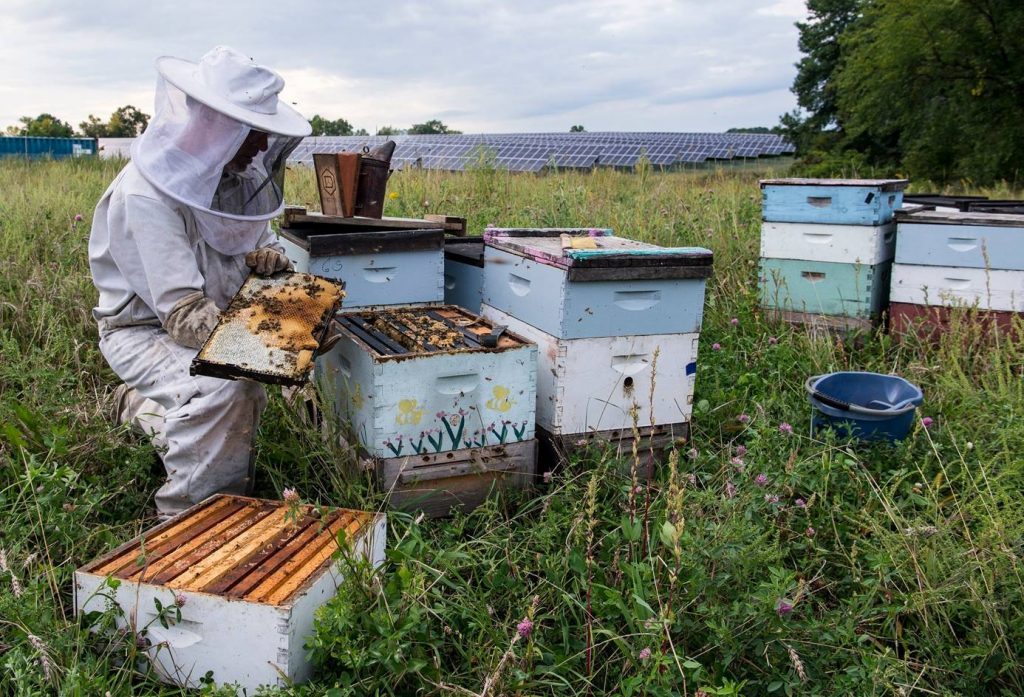[caption id="attachment_1842" align="alignnone" width="1024"] Minnesota bee keeper, Jim Degiovanni, inspects "BareHoney" hives outside IMS Solar, a pollinator-friendly photovoltaic array site in St. Joseph, Minn. Credit: Dennis Schroeder National Renewable Energy Lab Flickr (CC BY-NC-ND 2.0)[/caption]
Minnesota bee keeper, Jim Degiovanni, inspects "BareHoney" hives outside IMS Solar, a pollinator-friendly photovoltaic array site in St. Joseph, Minn. Credit: Dennis Schroeder National Renewable Energy Lab Flickr (CC BY-NC-ND 2.0)[/caption]
On May 20th, friends of wildlife around the globe celebrate World Bee Day. At OneEnergy, we strive to honor these powerful little pollinators every day by making the design of pollinator-friendly solar arrays a central part of our work.
A pollinator-friendly solar project incorporates acres of deeply-rooted meadows with native plants and shrubs that serve as habitat for local bees as well as butterflies and birds.
This novel approach to solar siting does more than just support bee health - it also benefits the farmers who host our projects on portions of their land.
The relationship between pollinators and farms is no secret. One in every three bites of food we eat is brought to us by pollinators, who contribute $24 billion to the U.S. economy.
By creating acres of new pollinator meadows adjacent to crops, our solar arrays can sustain the mutually beneficial relationship between crops and pollinators.
This is more than just a theory. Graduate students at the Yale School of Forestry and Environmental Studies have studied the relationship, and the results are encouraging:
“Our model suggests a net gain in food production is possible when highly pollinator-dependent crops are grown near pollinator-friendly solar projects — even when accounting for the land taken out of production by the solar project.”
- Minnesota Post, April 2, 2019
Another recent study showed that pollinators can increase soybean yields by up to 18 percent.
At OneEnergy, we are proud to help pioneer the movement to pair pollinators and solar in a naturally compatible way. We designed Baker Point Solar, the first solar project to meet Maryland’s pollinator-friendly solar standards and make solar honey on site, and are in the process of developing nearly a dozen more projects like it.
World Bee Day is a great reminder that bees and other pollinators are more than just beautiful to the eye. They play a powerful role in maintaining the health of our crops, our farm economy, and our environment.
By Marni Carroll
Marni Carroll is the Director of Development for the Mid-Atlantic region